Updated 30/06/2025
If you want more bang for your buck, look no further than herbaceous perennials. A perennial is a plant that survives for over a year. But it may die back to ground level after the growing season. It will be ready to spring back up next year.
With a growth cycle that runs like clockwork, year after year, these perennials burst into flower in the warmer months. Then, they die back over winter, and perform the same amazing ritual again with each passing year. Plant them properly, and you will enjoy years of delight from these marvellous plants.
Once established, many perennials are relatively hardy and most will thrive with little attention. This makes them a great choice for budding gardeners. All they need is a little deadheading. Some timely pruning and, after three years, division of one plant into two or more avoids overcrowding.
Plant placement
Herbaceous perennials are usually planted in a wide border or bed. They are often arranged in size order. Towering blooms are at the back, ground-hugging varieties at the front and middling plants in between.
This prevents taller plants from obscuring smaller ones, depriving them of much-needed sunlight. It also forms an attractive tiered effect, improving the overall impact of the border.
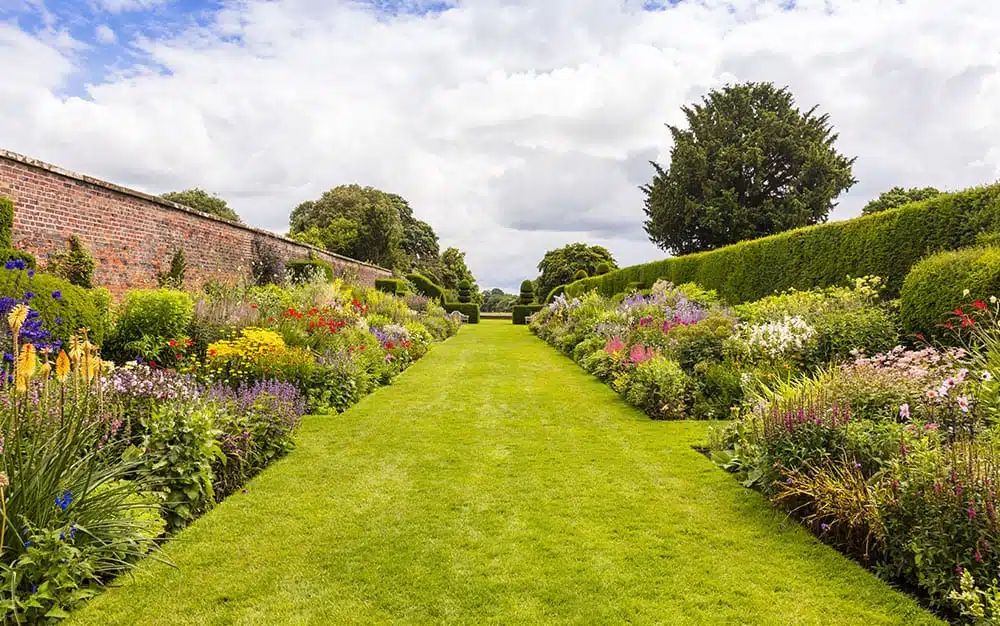
There are a huge array of plants to choose from in each height category so here are a few suggestions to get you on your way to creating the perfect herbaceous border.
Taller plants (1.2-2 metres)
Acanthus mollis (Bear’s breeches) Handsome upright plants with large glossy leaves with striking purple and white flowers in summer.
• Sun – Full sun, partial shade or full shade
• Position – South, North, West or East facing
• Exposure – Exposed or sheltered
• Moisture – Well-drained
• Soil – Loam, chalk or sand
They can take over your border so do keep an eye on them. And, if necessary, remove rooted spreading stems, which you can always give to friends and family.

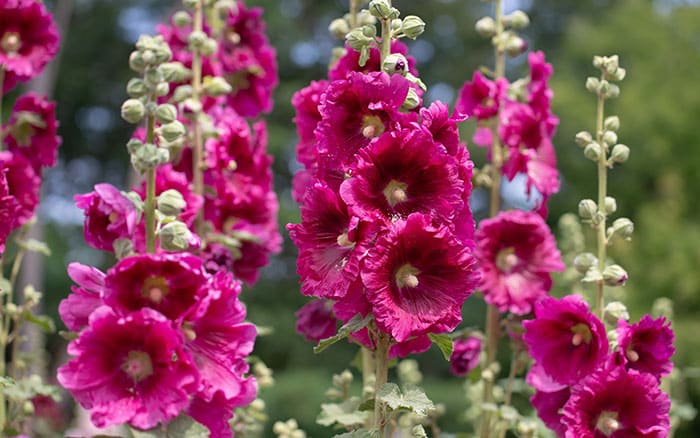
If your border is in full sun, Alcea (hollyhocks) add elegance and texture as well as old fashioned charm. Their crinkle petal flowers are attractive, but give them space for air to move around their stems to avoid rust on the leaves.
• Sun – Full sun
• Position – South or West facing
• Exposure – Sheltered or exposed
• Moisture – Well-drained
• Soil – Chalk, sand or loam
If you want full on romanticism then Delphiniums are the plants for you! Best known for their blue flower varieties they are actually available in a wide range of colours. Tall varieties will need cane supports from mid spring to stop stems falling over. But if you cut them down to almost ground level after flowering, you could get a second flush of flowers in the autumn!
• Sun – Full sun
• Position – South, West or East facing
• Exposure – Sheltered
• Moisture – Moist but well-drained
• Soil – Loam, chalk or sand
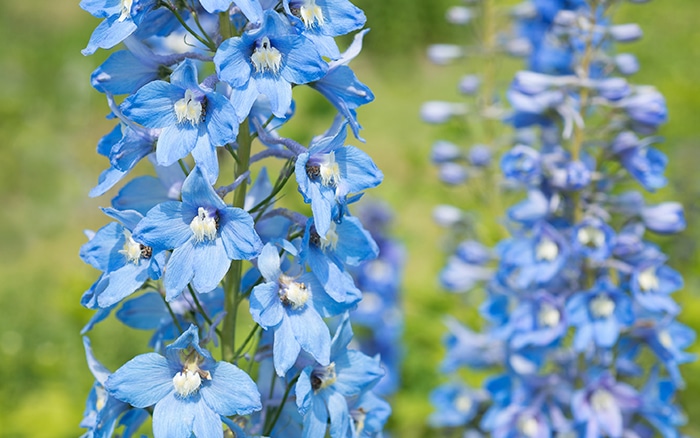
Medium plants (50cm-1.1 metres)
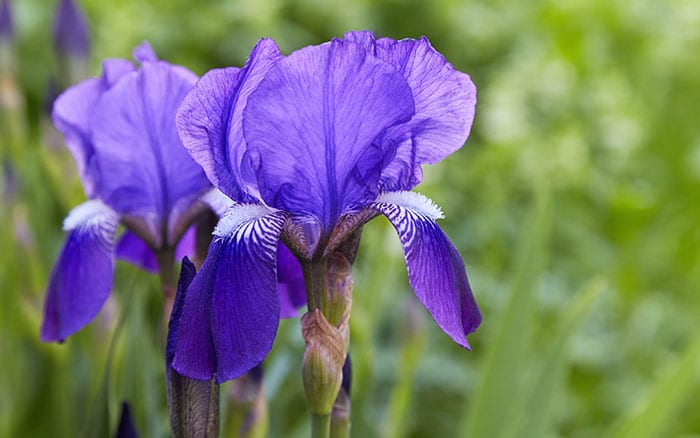
Bearded iris will give you year round interest with their striking evergreen spike shape leaves. And they will reward you with a glorious show of spring colour year after year. Plant them shallowly with their rhizomes exposed for the sun to warm them in August/September. And don’t let other plants shade them.
• Sun – Full sun
• Position – South, East or West facing
• Exposure – Exposed or sheltered
• Moisture – Well-drained
• Soil – Sand, chalk or loam
Astrantia major (Hattie’s pincushion) deserve to be more widely grown. Their beautiful flower colours ranging from the purest of whites to the deepest dark ruby reds, growing on stems around 60cm tall. These too will reward you with more flowers if cut back after initial flowering.
• Sun – Full sun or partial shade
• Position – South, North, West or East facing
• Exposure – Sheltered or exposed
• Moisture – Moist but well-drained
• Soil – Loam or clay
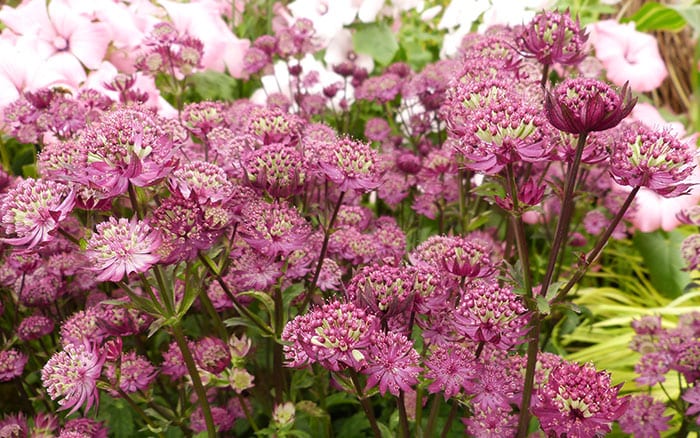
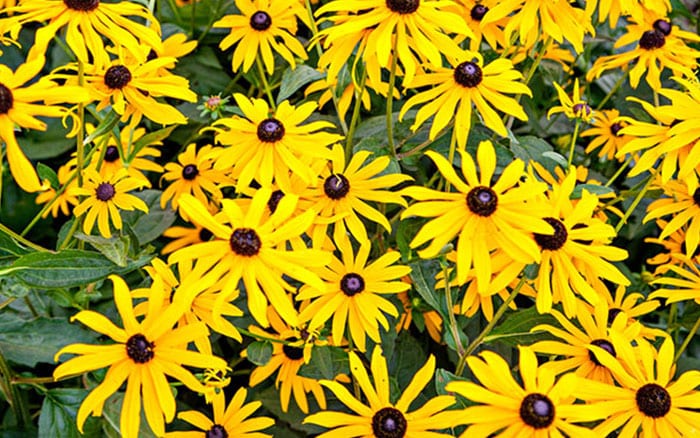
Rudbeckia (Coneflower) are cheerful, vibrant undemanding late summer flowering plants. They have daisy-like yellow or orange flowers much loved by pollinating insects.
• Sun – Full sun or partial shade
• Position – South or West facing
• Exposure – Sheltered or exposed
• Moisture – Moist but well-drained
• Soil – Loam, clay or chalk
• Sun – Full sun or partial shade
• Position – South, North, West or East facing
• Exposure – Sheltered or exposed
• Moisture – Moist but well-drained
• Soil – Loam or clay
Low-growing plants (up to 50cm)
Dahlias offer a huge array of colours and shapes, with plenty of dwarf cultivars for containers or to continue the tiered aesthetic in your borders.
• Sun – Full sun
• Position – South or West facing
• Exposure – Sheltered
• Moisture – Moist but well-drained
• Soil – Loam, clay or sand
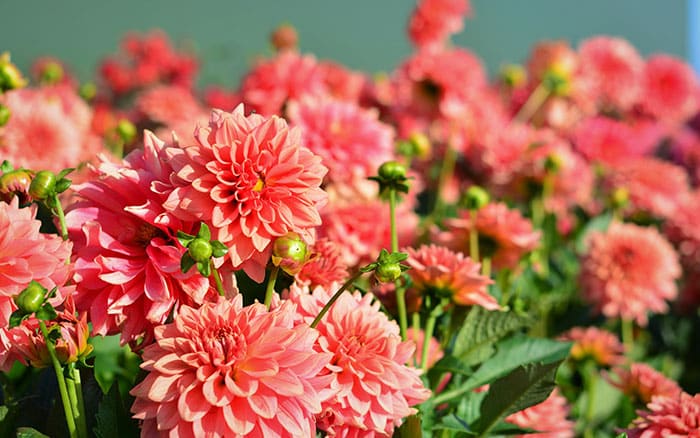
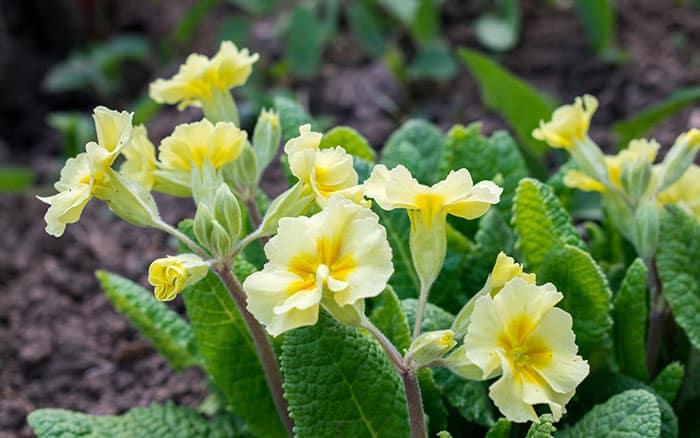
These low-maintenance, semi-evergreens are a great choice of delicate spring colour. Primroses are sure to add the finishing touch to a wildflower-inspired border.
• Sun – Full sun or partial shade
• Position – South, North, West or East facing
• Exposure – Sheltered
• Moisture – Moist but well-drained
• Soil – Chalk, clay, sand and loam
Campanula portenschlagiana (wall bellflower) will bring some evergreen colour to the front or your border, with violet-blue flowers in summer.
• Sun – Full sun or partial shade
• Position – South, North, West or East facing
• Exposure – Exposed or sheltered
• Moisture – Moist but well-drained
• Soil – Loam, chalk or sand
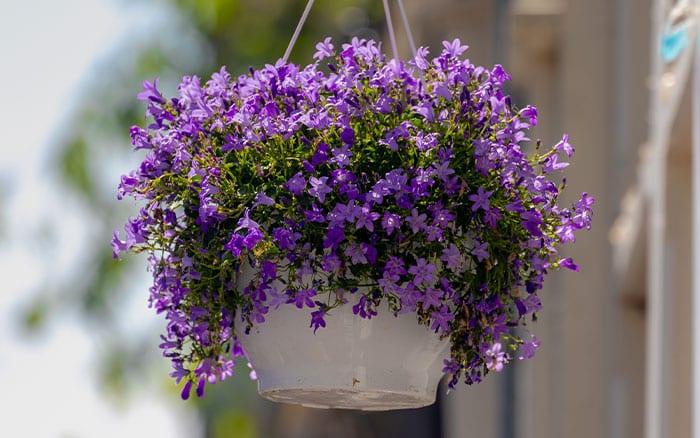
Flowering schedule
Think carefully about the flowering times of your chosen plants. This will help you achieve a border full of non-stop colour from spring through to the first frosts. So as one group of plants finish flowering another group takes over.
Year-round structure
As most herbaceous perennials disappear over winter it’s a good idea to add some strong structure evergreen shrubs for year round interest. And don’t overlook early flowering bulbs like snowdrops whose flowers are a delight to behold towards the end of a long cold winter.
Planting the border
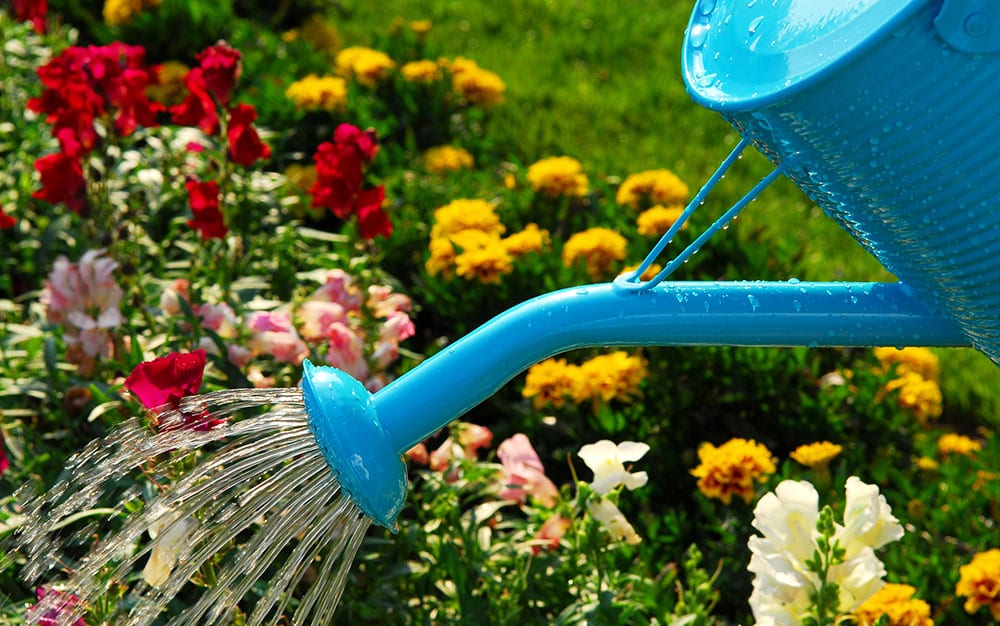
Herbaceous perennials benefit from the addition of organic matter to the soil before planting such as well-rotted farmyard manure.
Adding blood, fish and bone fertiliser can give you the edge in keeping your new and existing perennials happy.
For a bit of a wow impact try grouping several of the same plants together. Make sure they have enough space to grow and spread in subsequent years. And for a well thought out design place some of the same plants in other parts of the border. This is known as repeat planting, a trick used by garden designers to draw the eye along the border. This creates a harmonious planting scheme.
Once the plants are in the ground, they’ll need a good watering-in, even if the ground is wet and rain forecast. This helps settle the soil as roots need to make contact with the soil. And when you’ve done all that that don’t forget to take some time to stand back and admire your handiwork.
For more great gardening advice, make sure you head to my YouTube Channel. Make sure you’re subscribed with notifications on so you don’t miss any of my new videos.
Frequently Asked Questions
1 – What is an herbaceous perennial?
An herbaceous perennial is a plant which dies back to ground level each winter and re-emerges in spring. They’re reliable performers, offering beautiful blooms every year with minimal fuss.
2 – What are the best perennials for full sun borders?
Alcea (hollyhocks), bearded iris, dahlias, and rudbeckia are top choices for sunny borders. They thrive in well-drained soil and bring vibrant colour from spring to late summer.
3 – Can I grow herbaceous perennials in partial shade?
Yes, astrantia, primroses, and acanthus mollis all tolerate partial shade and still put on a lovely display. It’s all about choosing the right plant for the right position.
4 – What perennials are best for year-round interest in a border?
Since herbaceous perennials die back in winter, mix in evergreens like box or heuchera, and include early bulbs like snowdrops for winter cheer. It’s all about layering colour and structure.
5 – How often should I divide herbaceous perennials?
Every three to five years is ideal. This stops overcrowding and keeps plants vigorous. Lift and divide in spring or autumn. Just make sure each clump has strong roots and healthy shoots.

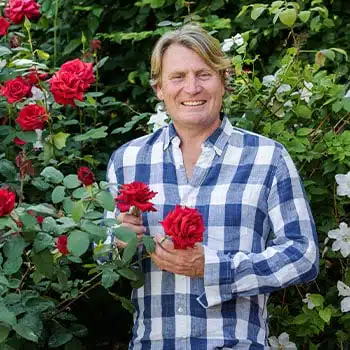
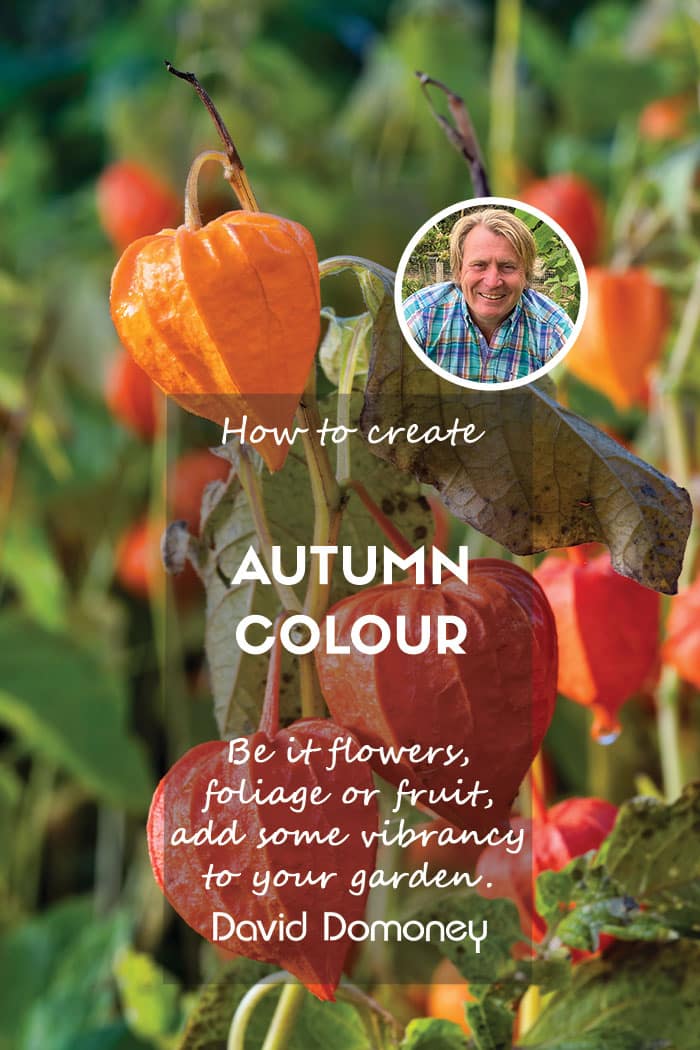
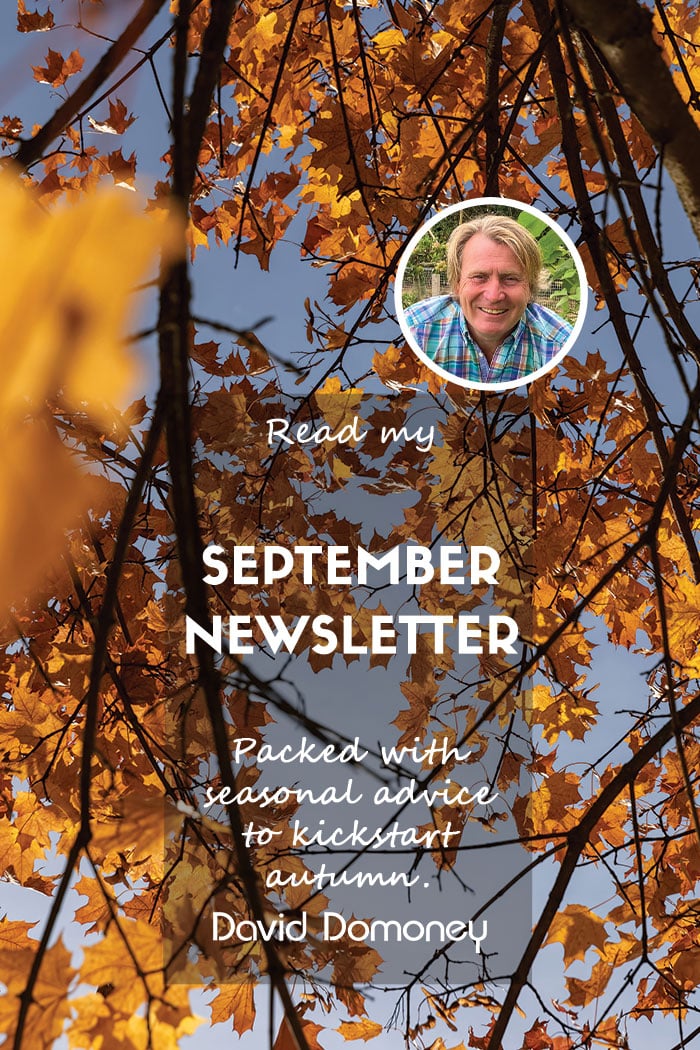
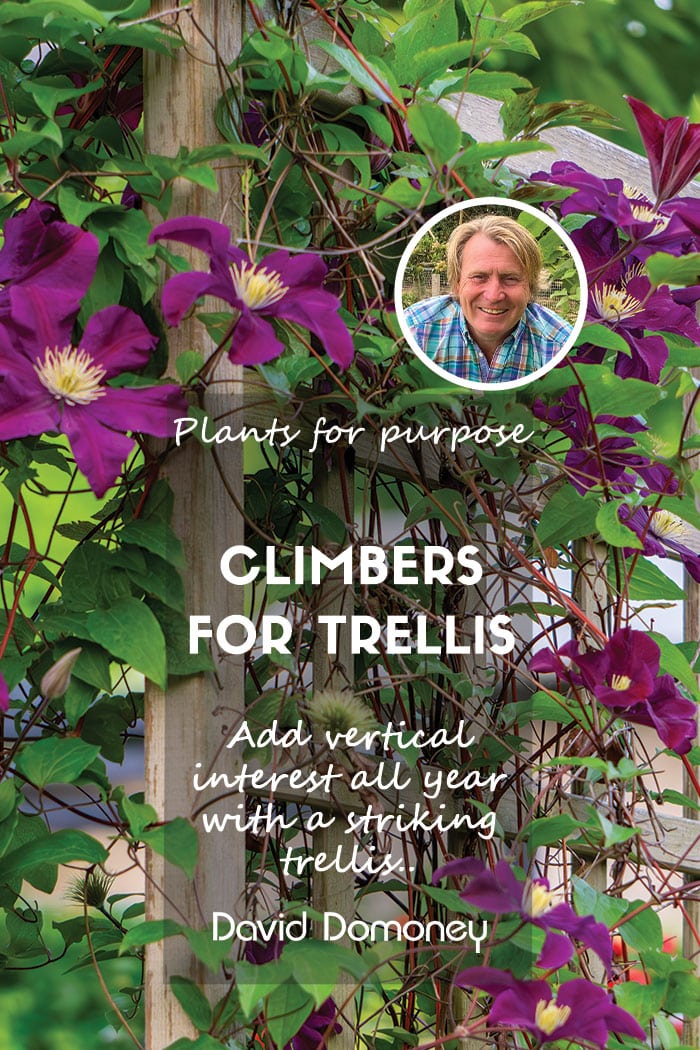
Hi Elaine
Please send a photo so I can help further.
David
Hi what’s a brilliant site you have. Loads of great advice. I live on the Isle of Man which is basically a huge bogluckily I have a lovely south west facing garden and manage to grow lots of lovely plants I live climbers. However just starated to redesign our small front garden. We have planted a climbing hydrangea which is doing well. I would love a colourful cottage garden look but not had much success with lupins etc. We have paid more attention to our soil this year and where we plant. Hopefully will be more successful this year. Our back garden is clay but front garden not as bad. I think I am really going to enjoy your news letter absolutely love my garden.
This is really helpful for me, thank you!
Thank you for the great advice,
I’m planning to re plant my garden this year , want to encourage birds bees and butterflies.
Your like a good friend always there for advice..